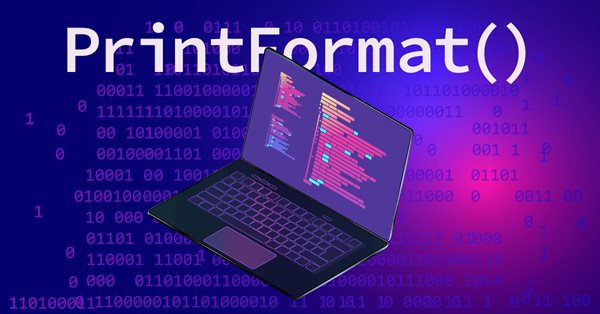Thank you. Very informative, but not from the first reading...))))))
Reading the help when writing code is somehow painful and time-consuming. That's why I don't understand much... I hope this article will help me to understand the subtleties of PrintFormat() and StringFormat() better.
Perhaps the only non-obvious point not covered in the help is when specifying the data size specifier (h | l | ll | I32 | I64) can be really useful if everything works without it.
Look at this example
//+------------------------------------------------------------------+ //| Script programme start function| //+------------------------------------------------------------------+ void OnStart() { //--- long x = (long)0xFFFFFFFF * 1000; Print("\nDEC: ", typename(x)," x=",x,"\n---------"); Print("%hu: ", StringFormat("%hu",x)); Print("%u: ", StringFormat("%u",x)); Print("%I64u: ",StringFormat("%I64u",x)); Print("%llu: ", StringFormat("%llu",x)); Print("\nHEX: ", typename(x)," x=",StringFormat("%llx",x),"\n---------"); Print("%hx: ", StringFormat("%hx",x)); Print("%x: ", StringFormat("%x",x)); Print("%I64x: ",StringFormat("%I64x",x)); Print("%llx: ", StringFormat("%llx",x)); }
Result
2023.07.12 17:48:12.920 PrinFormat (EURUSD,H1) DEC: long x=4294967295000 2023.07.12 17:48:12.920 PrinFormat (EURUSD,H1) --------- 2023.07.12 17:48:12.920 PrinFormat (EURUSD,H1) %hu: 64536 2023.07.12 17:48:12.920 PrinFormat (EURUSD,H1) %u: 4294966296 2023.07.12 17:48:12.920 PrinFormat (EURUSD,H1) %I64u: 4294967295000 2023.07.12 17:48:12.920 PrinFormat (EURUSD,H1) %llu: 4294967295000 2023.07.12 17:48:12.920 PrinFormat (EURUSD,H1) 2023.07.12 17:48:12.920 PrinFormat (EURUSD,H1) HEX: long x=3 e7fffffc18 2023.07.12 17:48:12.920 PrinFormat (EURUSD,H1) --------- 2023.07.12 17:48:12.920 PrinFormat (EURUSD,H1) %hx: fc18 2023.07.12 17:48:12.920 PrinFormat (EURUSD,H1) %x: fffffc18 2023.07.12 17:48:12.920 PrinFormat (EURUSD,H1) %I64x: 3 e7fffffc18 2023.07.12 17:48:12.920 PrinFormat (EURUSD,H1) %llx: 3 e7fffffc18
Perhaps the only non-obvious point in the help is not covered - in what cases it can be really useful to specify the data size specifier (h | l | ll | I32 | I64) if everything works without it.
Of course it works. But just a couple of hours ago I was thinking about the same question and I had a thought: if we pass only double-values to a function, and then inside, based on some criteria, we understand that these double-data should be long-data. This is where we specify their size. Just a thought out loud. I haven't checked it.
And how did I live all these years without printformat.... I'll probably continue to do so.
Artem, I don't understand where this came from
uint w=(header_width==0 ? header.Length()+1 : header_width);
I didn't plug in any library. Or am I completely blind?
- Free trading apps
- Over 8,000 signals for copying
- Economic news for exploring financial markets
You agree to website policy and terms of use
Check out the new article: Studying PrintFormat() and applying ready-made examples.
The article will be useful for both beginners and experienced developers. We will look at the PrintFormat() function, analyze examples of string formatting and write templates for displaying various information in the terminal log.
Displaying values in the log or on the monitor screen is a simple and familiar operation until you need to show something more complex than "Hello, world". But sooner or later a situation arises when you need to make a formatted output of a value or property that is not very often in demand. Of course, you can look into the MQL5 help.

But sometimes you want to have a ready-made collection of recipes for displaying all kinds of information provided by the MetaTrader 5 terminal. In this article, we will try to understand the intricacies of calling the PrintFormat function and write ready-made templates you can simply insert into your code.Author: Artyom Trishkin